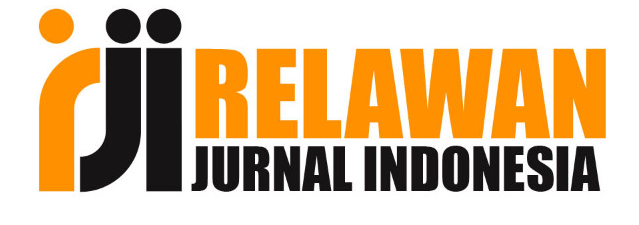The Effectiveness of E-Learning as Teaching Media in EFL Classroom
DOI:
https://doi.org/10.36982/jge.v8i1.742Abstract
ABSTRACT
This research was made based used non-equivalent control group design that was conducted University of Indo Global Mandiri Palembang. The aim of this research was to find out the effectiveness of e-learning as teaching media in EFL classroom. In this research, there were two different samples to be judged their writing achievement. First is experimental group which was given a treatment and second is control group which was not given any treatment. As data source, a test in written test was used in this research. Before starting the research, a pre-test was taken from both groups and two raters scored the students’ written tests based on rubric score. After implementing the treatment, both groups were given a post-test and the same raters scored their tests to know the significant improvement and significant difference between the scores of both goups. The results indicated that by using this technique, the students’ writing achievement was improved. It was shown from the mean scores of pre-test in experimental group that increased from 43,30 to be 77,20 in post-test. The significant difference of the post-test scores between both of experimental and control groups could be seen from the results of the t-obtained of both groups. It was considered higher than the t-table. Accordingly, it could be claimed that teaching writing by using e-learning brought about an improvement in students’ writing achievement. This technique was good way to help students learning English.
Keywords : improving, e-learning
ABSTRAK
Penelitian ini di buat berdasarkan penelitian desain kelompok control tidak setara yang dilakukan di Universitas Indo Global Mandiri Palembang. Tujuan dari penelitian ini adalah untuk meningkatkan kemampuan menulis siswa dengan menerapkan e-learning. Dalam penelitian ini, ada dua sampel yang berbeda untuk dinilai pada kemampuan menulis siswa. Pertama adalah kelompok eksperimen yang diberi perlakuan dan yang kedua kelompok control yang tidak diberi perlakuan. Sebagai sumber data, tes dalam bentuk tertulis digunakan dalam penelitian ini. Sebelum memulai penelitian, pre-test diambil dari kedua kelompok dan dua penilai menilai kemampuan berbicara siswa berdasarkan skor rubrik menulis. Setelah menerapkan pengajaran, kedua kelompok diberi post-test dan penilai yang sama menilai kemmpuan menulis siswa untuk mengetahui peningkatan yang signifikan dan perbedaan yang signifukan antara skor kedua kelompok. Hasil menunjukkan bahwa dengan menggunakan teknik ini, kemampuan menulis siswa meningkat. Hal itu di tunjukkan dari nilai rata-rata pre-test pada kelompok eksperimen yang meningkat dari 43,30 menjadi 77,20 pada saat post-test. Perbedaan yang signifikan pada saat post-test antara kedua kelompok eksperimen dan control dapat dilihat dari hasil t-hitung. Nilai tersebut dianggap lebih tinggi dari t-tabel. dengan demikian, dapat dikatakan bahwa mengajar kemampuan menulis dengan menggunakan e-learning meningkatkan kemampuan menulis siswa. Teknik ini adalah cara yang baik untuk membantu siswa belajar bahasa inggris.
Kata kunci : peningkatan, e-learningReferences
Agarwal, A. & Sharma, M. 2012. Use of multimedia as a new educational technology tool a study. International Journal of Information and Education Technology, 2(5), 468-471. Retrieved from http://ijiet.org/papers/181-T10039.pdf
American Council on the Teaching of Foreign Languages (ACTFL). 2012. Retrieved from https://www.actfl.org/publications/guidelines-and-manuals/actfl-proficiency-guidelines-2012/english/listening
Andersen, B. B & Brink, K.V.D . 2013. Multimedia in education. Moscow, Russia: The UNESCO Institute for information technologies in education.
Arikunto, Suharsimi. 2010. Prosedur penelitian suatu pendekatan praktik. Jakarta, Indonesia: PT. Rineka Cipta.
Brown, H. D. 2000. Teaching by principles an interactive approach to language pedagogy. San Francisco, CA: Longman.
Brown, H. D. 2003. Language assessment principles and classroom activities practices. San Francisco, CA: Longman.
Brown, S. 2006. Teaching listening. New York, NY: Cambridge University Press
Cresswell, J. W. 2012. Educational research Planning, conducting, and evaluating quantitative and qualitative research (4th ed). Boston, MA: Pearson.
EF English Proficiency Index. 2012. Retrieved from http://www.ef.com/epi.pdf
Fraenkel, J. R., Wallen, N. E., & Hyun, H.H. 2010. How to design and evaluate research in education (8th ed). New York, NY: McGraw-Hill.
Harmer, J. 2001. How to teach English: An introduction to the practice of English language teaching. Edinburgh, England: Longman.
Harmer J. 2007. The practice of English language teaching (4th ed). Edinburgh, England: Longman.
Hwa, S. P & Mukti, N. 2004. Malaysian perspective: Designing interactive multimedia learning environment for moral values education. Educational Technology & Society, 7(4) p. 143-152. Retrieved from http://www.ifets.info/journals/7_4/14.pdf
Hofstetter, Fred T. (2001). Multimedia literacy (3rded). New York, NY: McGraw-Hill International Edition.
Kocur, D., & Kosc, P., 2009. “E-learning Implementation in Higher Educationâ€, Acta_ElectrotechnicaetInformatica, Vol. 9, No. 1, pp20-26
Koohang, A. Riley, L. Smith, T. 2009. E-Learning and Constructivism: From Theory to Application. Interdisciplinary Journal of E-Learning and Learning Objects: Volume 5
Kwofie, B., and Henten, A. 2011. The Advantages and Challenges of Eâ€Learning Implementation: The Story of a Developing Nation. Paper presented on 3rd World Conference on Educational Sciences Bahcesehir University, Conference Centre Istanbul – Turkey.
Maxom, M. 2009. Teaching English as foreign language for dummies. Chichester, WS: Wiley
Mayer, R. E 2003. The promise of multimedia learning: using the same instructional design methods across different media. Learning and Instruction, p. 125-139. Retrieved from http://www.elsevier.com/locate/learninstruc.pdf
Neo, M & Ken, T. 2004. Integrating multimedia into the Malaysian classroom: Engaging students in interactive learning. The Turkish Online of Educational Technology, 3(3), 31-37. Retrieved from http://www.tojet.net
Richards, Jack C & Schmidt, R. 2002. Longman dictionary of language teaching and applied linguistics (3rd ed). British: Library Of Congress.
Richards, Jack C & Renandya, A.W. 2002. Methodology in language teaching: An anthology of current practice. New York, NY: Cambridge University Press.
Sharma, L.M & Pooja. 2016. Enhancing students interest in English language via multimedia presentation. International Journal of Applied Research, 2(1), 278-281. Retrieved from www.allresearchjournal.com
Vaughan, T. (2011). Multimedia: making it works (8th ed). New York, NY: McGraw Hill
Yang, W & Fang, F. 2008. Optimization of multimedia English teaching in context creation. International Education Studies, 1(4), 136-142. Retrieved from http://www.ccsenet.org/journa/index.php
Downloads
Published
How to Cite
Issue
Section
License
Global Expert: Jurnal Bahasa dan Sastra is published by Universitas Indo Global Mandiri and licensed under a Creative Commons Attribution-ShareAlike 4.0 International License.










